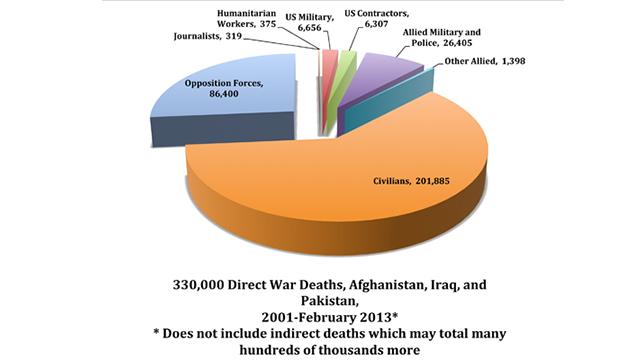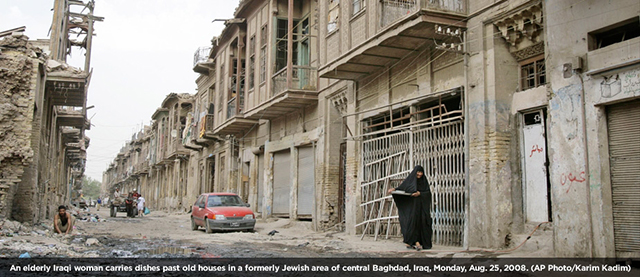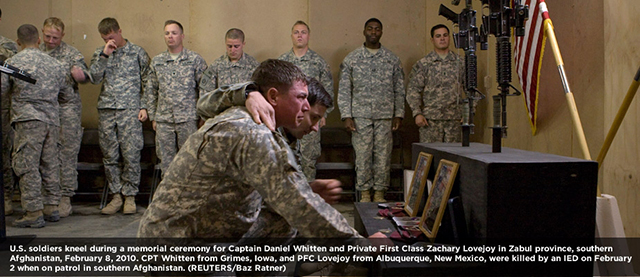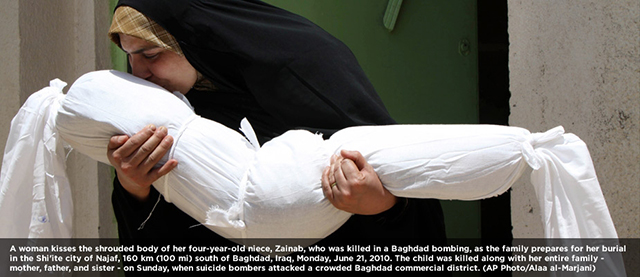
The wars begun in 2001 have been tremendously painful for millions of people in Afghanistan, Iraq, and Pakistan, and the United States, and economically costly as well. Each additional month and year of war will add to that toll. Moreover, the human costs of these conflicts will reverberate for years to come in each of those four countries. There is no turning the page on the wars with the end of hostilities, and there is even more need as a result to understand what those wars’ consequences are and will be.
The goal of the Costs of War project has been to outline a broad understanding of the domestic and international costs and consequences of those wars. A team of 30 economists, anthropologists, political scientists, legal experts, and physicians were assembled to do this analysis. Their research papers are posted and summarized on this website.
We asked:
- What have been the wars’ costs in human and economic terms?
- How have these wars changed the social and political landscape of the United States and the countries where the wars have been waged?
- What have been the public health consequences of the wars?
- What will be the long term legacy of these conflicts for veterans?
- What is the long term economic effect of these wars likely to be?
- Were and are there alternative less costly and more effective ways to prevent further terror attacks?
Some of the project’s findings:
- Our tally of all of the war’s dead — including soldiers, militants, police, contractors, journalists, humanitarian workers and civilians — shows that at least 330,000 people have died due to direct war violence.
- Indirect deaths from the wars, including those related to malnutrition, damaged health infrastructure, and environmental degradation, must also be tallied. In previous wars, these deaths have far outnumbered deaths from combat and that is likely the case here as well.
- 200,000 civilians have been killed as a result of the fighting at the hands of all parties to the conflict, and more will die in Afghanistan, Iraq, and Pakistan as the violence continues. But most observers acknowledge that the number of civilians killed has been undercounted. The true number of civilian dead may be much larger when an adequate assessment is made.
- While we know how many U.S. soldiers have died in the wars (over 6,600), what is startling is what we don’t know about the levels of injury and illness in those who have returned from the wars. New disability claims continue to pour into the VA, with over 750,000 disability claims already approved. Many deaths and injuries among U.S. contractors have not been identified.
- Millions of people have been displaced indefinitely and are living in grossly inadequate conditions. The number of war refugees and displaced persons — 7.4 million — is equivalent to all of the people of Connecticut and Oregon fleeing their homes.
- Despite the U.S. military withdrawal, Iraq’s health, infrastructure, and education systems remain war-devastated.
- The armed conflict in Pakistan, which the U.S. helps the Pakistani military fight by funding, equipping and training them, is in many ways more intense than in Afghanistan although it receives less coverage in the American media.
- The United States is at war in Yemen. During 2012, the Obama administration quickened its pace of drone strikes in the country.
- The wars have been accompanied by erosions in civil liberties at home and human rights violations abroad.
- The human and economic costs of these wars will continue for decades, some costs not peaking until mid-century.
- The U.S. federal price tag for the Iraq war — including an estimate for veterans' medical and disability costs into the future — is about $2.2 trillion dollars. The cost for both Iraq and Afghanistan/Pakistan is going to be close to $4 trillion, not including future interest costs on borrowing for the wars. Many of the wars’ costs are invisible to Americans, buried in a variety of budgets, and so have not been counted or assessed. For example, while most people think the Pentagon war appropriations are equivalent to the wars’ budgetary costs, the true numbers are twice that, and the full economic cost of the wars much larger yet.
- As with former U.S. wars, the costs of paying for veterans’ care into the future will be a sizable portion of the full costs of the war.
- The ripple effects on the U.S. economy have also been significant, including job loss and interest rate increases, and those effects have been underappreciated.
- While it was promised that the U.S. invasions would bring democracy to Afghanistan and Iraq, both continue to rank low in global rankings of political freedom, with warlords continuing to hold power in Afghanistan with U.S. support, and Iraqi communities are more segregated today than before by gender and ethnicity as a result of the war.
- Women in both countries are essentially closed out of political power and high rates of female unemployment and widowhood have further eroded their condition.
- During the U.S. troop withdrawal from Iraq, President Obama said that the United States military was leaving behind a “sovereign, stable, and self-reliant Iraq.” This was not only an inaccurate account of Iraq’s situation at that time, but the country has since become less secure and politically stable. Although violence in Iraq has declined since its peak, there has been a steady increase in the number of attacks over the last year.
- Serious and compelling alternatives to war were scarcely considered in the aftermath of 9/11 or in the discussion about war against Iraq. Some of those alternatives are still available to the U.S.
There are many costs of these wars that we have not yet been able to quantify and assess. With our limited resources, we focused on the human toll in the major war zones, Afghanistan, Iraq and Pakistan and on U.S. spending, as well as on assessing the claims made for enhanced security, democracy, and women’s condition. There is still much more to know and understand about how all those affected by the wars have had their health, economies, and communities altered by the decade of war, and what solutions exist for the problems they face as a result of the wars’ destruction.
3 WAYS TO SHOW YOUR SUPPORT
- Log in to post comments














